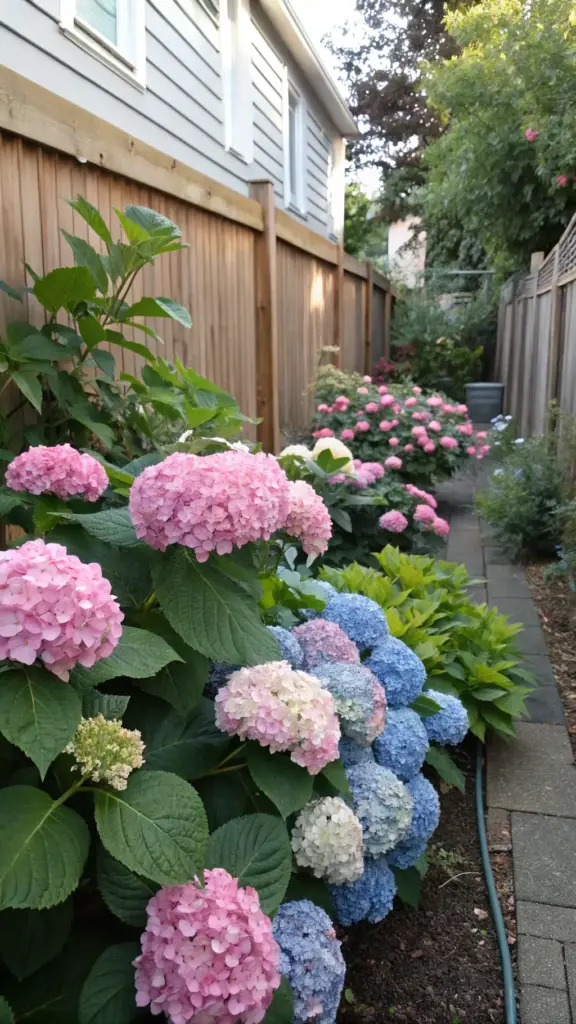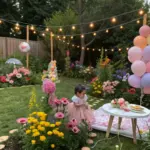4. Hydrangeas: Big Blooms for Small Spaces

If you’ve ever dreamed of having a garden that feels like it’s straight out of a magazine, hydrangeas are your ticket to making that happen—even if you’re working with limited space. I’ll never forget the first time I planted a hydrangea in my tiny backyard. It was like watching a magic trick unfold—those giant, fluffy blooms just kept getting bigger and better every year. But here’s the thing: not all hydrangeas are created equal, especially when it comes to Zone 5. Let’s break down how to choose the right variety, tweak your soil for those dreamy pink or blue blooms, and bring the beauty indoors for seasonal decor updates.
Choosing the Right Hydrangea Variety for Zone 5
When it comes to hydrangeas, picking the right type is crucial if you want them to thrive in Zone 5’s chilly winters. Trust me, I learned this the hard way—I once planted a mophead hydrangea that wasn’t cold-hardy, and let’s just say it didn’t survive its first frost.
For Zone 5, stick with varieties like ‘Annabelle’ or ‘PeeGee’ hydrangeas. These tough cookies can handle the cold and still deliver those show-stopping blooms. Another favorite of mine is the ‘Limelight’ hydrangea, which has these gorgeous lime-green flowers that turn pink as the season progresses.
Here’s a quick tip: pay attention to bloom time. Some hydrangeas, like the ‘Endless Summer’ series, bloom on both old and new wood, meaning you’ll get flowers even if winter nips at the buds. That’s a game-changer for unpredictable climates!
Soil pH Tips to Achieve Pink or Blue Blooms
Now, let’s talk about one of the coolest things about hydrangeas: their color-changing superpower. Want pink blooms? Acidic soil is your friend. Prefer blue? You’ll need to make your soil more alkaline.
I remember being so excited to try this out, but I messed up the first time by overdoing the amendments. Here’s what works: for blue hydrangeas, sprinkle some aluminum sulfate around the base of the plant (but don’t go overboard—it’s easy to burn the roots). For pink hydrangeas, add dolomitic lime to raise the pH.
One thing to keep in mind: not all hydrangeas change color. Varieties like ‘Annabelle’ will stay white no matter what you do, so save your experiments for bigleaf or mophead types. And always test your soil before making adjustments—it’s like giving your garden a check-up before diving in.
Styling Hydrangeas Indoors for Seasonal Decor Updates
Okay, here’s where the fun really begins. Once your hydrangeas start blooming, resist the urge to leave them all outside. Bring those beauties inside!
I love using hydrangeas in DIY floral arrangements because they’re basically a one-stop shop for elegance. Pair them with eucalyptus for a modern look, or toss in some baby’s breath for a soft, romantic vibe. And don’t be afraid to mix colors—pink, blue, and white hydrangeas together create a stunning ombré effect.
Another idea? Use single stems in mason jars or vintage vases for a rustic touch. Scatter them around your home for instant charm. Or, if you’re hosting a summer dinner party, a big hydrangea centerpiece is an absolute showstopper.
Pro tip: dry your hydrangeas by hanging them upside down in a cool, dark spot. Once dried, they make perfect additions to fall wreaths or winter mantel displays. Talk about versatility!
Alright, before we move on, here’s a little teaser: Up next, we’re diving into daffodils, the cheerful harbingers of spring that can brighten up even the gloomiest days. Want to know how to pair them with tulips for a layered look that’ll have your neighbors green with envy? Click the next button below to find out! 🌼









GIPHY App Key not set. Please check settings